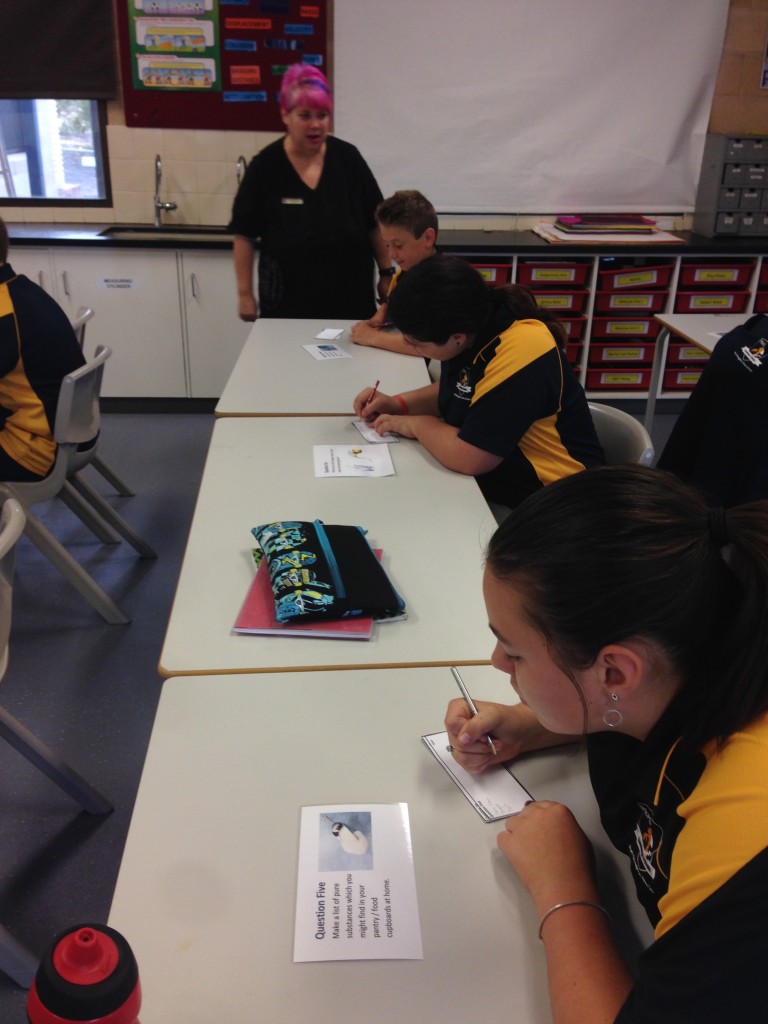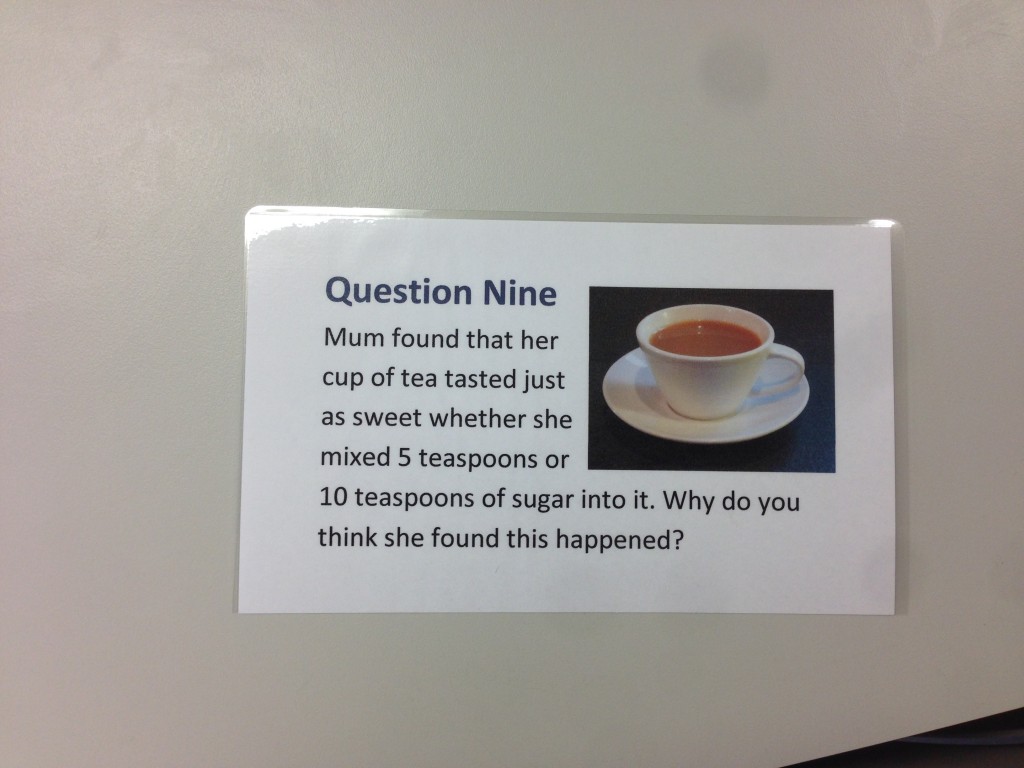On Feburary 18th Tanya kindly allowed me to share her first classroom observation for the year. Tanya’s focus for her observation was finding out what students already know. You can view this first post here.
Tanya has continued her work in this area and has completed a second observation, still focusing on finding out what students already know. Tanya is trialling different methods of finding this information out and determining those she sees as most beneficial to her and her students. On this occasion she used a method called the “Letterbox” strategy.
In this observation Tanya was trying to determine what understandings and knowledge her Year 7 students had of separating mixtures. Tanya created 10 questions and had students rotate around giving their answers on a piece of paper supplied by Tanya. Students had 5 minutes to answer as best they good each question and then “post” their responses back to Tanya via a container at the front of the room.
Tanya’s observational notes
Port Broughton Area School Observational Proforma
Teacher: Tanya Hacket
Observer: Nick Turra
Date: 18.3.15
Focus of Observation
Finding out what students know/bring to a topic. Topic – Year 7 Separating Mixtures. Tanya will be using a ‘Letterbox’ strategy to try and determine student prior knowledge.
Requires the teacher to distribute a series of questions relevant to the topic. Individually students write answers to the questions on a slip of paper and put them in the “letter box”.
TfEL Domain 4 Personalise and connect learning. Element: 4.1 build on learners’ understandings the teacher identifies students’ prior knowledge and cultural practices as a starting point for curriculum.
Observers Notes (staple any additional pages to this document)
1. Clear explanation of purpose – “this is not a test”, “I want to know what you already know”.
2. Very organised having answer sheets already prepared with student names on them and set up so students started at different questions (1 student at 1 question).
3. Allowed 5 minutes for each question then students rotated.
4. Moved around to all students and assisted with explanations of questions.
a. Consideration as to how much help is provided for this type of activity would be important.
b. Balancing explanation of the questions against providing students too much information that allows them to answer a question they may not have got otherwise. This could give false information about what the students really know.
5. Students were engaged in the activity and interested. Five minutes was plenty of time for some students with some questions while others could have used more.
6. End of lesson – explained to students that those questions would be used as part of discussions in the coming weeks.
a. A great resource/basis for dispelling misconceptions that students have.
b. A great resource/basis to share ideas students had for solving some of the problems exposing students to a wider range of ideas and thoughts.
Where to now?
What can be taken from this observation?
Found the process very useful.
Questions generated a range of answers, which showed a range of misconceptions.
Tanya found these useful and assisted with direction of future lessons.
All the concepts in the questions will be covered during the unit.
Can I make any adjustments to my teaching based on this observation or this observation in conjunction with other observations?
Did not alter program. As there were no concepts that students fully understood Tanya was able to continue with the program she had designed with minimal alteration but armed with extra information about were students are at.
How will I know that change has occurred in the classroom? What indicators will I see?
Based on student responses Tanya is comfortable in her knowledge that the program
Although Tanya is an experienced teacher and always felt she was delivering content at the appropriate level she now clearly knows that she is. She is not moving on from concepts because she thinks “students should know it already”. She has taken the time to find out and is therefore working at an appropriate level with the students.
When will I have my next observation?
Next unit of science work with either the Year 7 or 8 classes. Tanya will continue to try different methods to find out prior knowledge.






